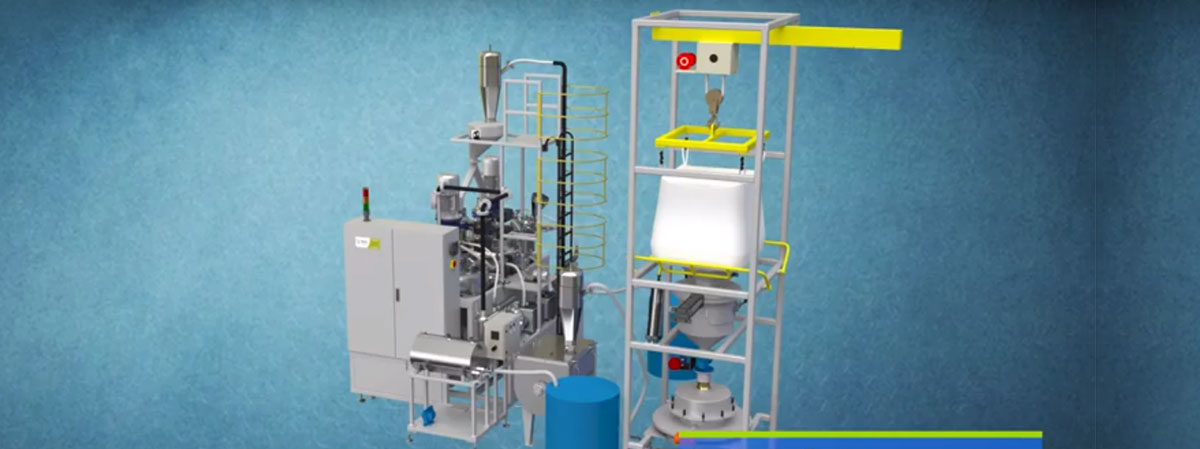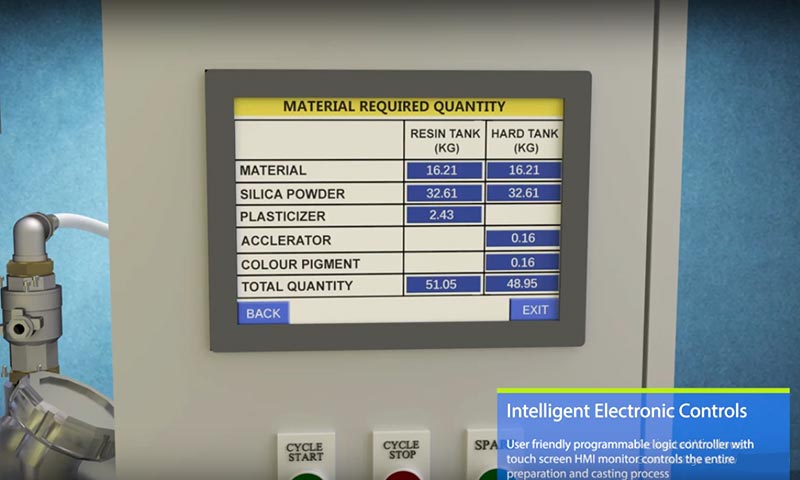Blog

Silica handling in Transformer Casting
This silica is used in the manufacturing of cast resin transformers in its powder form . It is used as a filler in the resin and hardener to improve the physical properties of the transformer. It ensures good process operability in mixed system viscosity and anti-sedimentation. It also brings excellent mechanical strength, electrical insulation, dimensional stability, and thermal shock resistance. Just as importantly, it also exhibits a low coefficient of thermal expansion (10ppm°C or below) and a high flexural modulus of above 20 GPa.
Owing to the rich mix of properties silica is primed to perform a critical role in the manufacture of transformers.
The handling and mixing challenges of silica
The handling and mixing of the silica fillers poses a lot of challenges to mid and large scale transformer manufacturers:
- Manual Handling – Most manufacturers treat the silica to be used in a critical component like a cast resin transformer. The silica powder that is used in these industries is mostly brought in 1,000 kg bulk bags (1 ton). The weight makes the manual handling extremely cumbersome. Generally 3 – 4 people would have to be deputed to handle the loading and unloading tasks. This adds complexity, space and cost on the shopfloor.
- Time-consuming – The silica fillers have to be manually weighed separately before mixing with the resin hardener. It also has to be heated and blended separately making the entire process more tedious, slow, and heavily dependent on labour.
- Accuracy – Manufacturing of a transformers requires a highly accurate mix of silica powder to be mixed with the resin and hardener. The silica powder being used must be completely dry and even the slightest trace of moisture is detrimental to the quality. This accuracy and control is virtually impossible to achieve with manual handling and mixing.
- Contamination – While being mixed, the silica powder has to be free of even the slightest trace of moisture. Typically, Silica Power has the tendency absorb moisture and form lumps. To address these issues, the silica has to be heated to remove the moisture and blended for enabling uniform mixing. When carried out manually, the process enhances the risks of contamination with moisture or foreign materials.
- Wastage / Spillage – Because of the manual handling, higher levels of wastage of the silica powder in the process of unloading as well as through improper mixing and proportions are observed. This obviously drives up the costs.
- Safety and Quality Compromise – The manual process is also risky. Manually handling such heavy bags can prove dangerous especially with unskilled workers. There is also the real danger of the air-borne fine silica powder that enters the breathable air in the vicinity of the loading operation. The intermittent flow of silica outside the bag while pouring manually also leads to overflows and piling up of the material. That apart, since there is no process in place to handle the raw material, the safety and the quality of the end product is also potentially compromised.
The Paradigm Shift – how the entire process can be completely automated
At Twin, we have an integrated silica processing unit which takes care of the entire process – end-to-end. From unloading of the bags to in-line heating and blending with vacuum transfer – the entire process is seamlessly handled.

 The bag-unloading unit lifts up the 1-ton bag, cuts it from the bottom, and empties the complete contents into a hopper. This completely removes the manual effort of lifting the bag and addresses the issues of wastage.
The bag-unloading unit lifts up the 1-ton bag, cuts it from the bottom, and empties the complete contents into a hopper. This completely removes the manual effort of lifting the bag and addresses the issues of wastage.
The contents of the hopper are transferred to an in-line heating and blending unit via vacuum transfer. This protects the silica from any contamination even while the moisture is completely removed and a uniform consistency achieved.
The material is then weighed and proportionally vacuum transferred to be missed with the resin hardener. This assures that the right quantities are applied. The benefits of automation are many:
- This automated process reduces the use of manual labour and reduces the safety risk.
- It accelerates the entire process& ramp up the production.
- The in-line blending and mixing saves time and prevents contamination. The perks of inline process are:
- Ratio monitoring: Desired amount of silica powder is added & maintains the required ratio.
- Magnetic sieving helps to maintain the quality of silica powder by segregating stones & undesirable metallic parts.
- The rotary flap ensures there’s no presence of lumps of silica powder in the mixture.
- Blending & heating arrangement of silica powder helps to achieve equal heating of silica powder unlike oven heating of silica bags that heats the powder unequally.
- As silica constitutes the major part of the raw material (60-70 % approx) this plays an important role in APG casting.
- Manual errors are reduced. The end quality of the final product is not compromised upon and can be maintained at a predictably high level.
- This also increases the flexibility that can be brought into the plant layout. The silica handling solution is quick to install and to get started with the production.
With our bag handling solution, we provide companies with system that can handle material consumption of 2 tons of mix/day.
At Twin, our approach has always been to define innovative new solutions that address the specific pain points of our customers. Even as we help to apply intelligent automation to a variety of manufacturing processes, it seems these applications are only growing!




